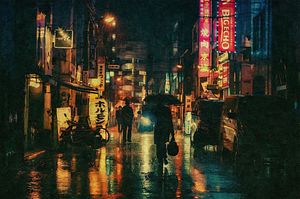As Japan prepares to welcome more foreigners ahead of the 2020 Tokyo Olympics, the government pledged to create “the safest country in the world.” But when large scale sports events are held, requiring the mass manufacturing of uniforms, foodstuffs and sports venues within a tight deadline, naturally it prompts questions over human rights concerns. The high demand for temporary workers in turn bumps up demand for prostitutes and brothels and attracts attention from international and domestic sex trafficking circuits looking to expand their market.
A recent police report showed that 27 people had been rescued from forced labor or forced prostitution in Japan in 2018, down from 46 the previous year. Japanese nationals accounted for the majority of victims, followed by Filipinos and Thai nationals. All victims were females and included five Japanese children. The authorities say the victims were forced into performing sexual services in order to pay off illegal loans.
The U.S. government’s annual trafficked persons watchlist ranks countries in tiers — one to three – according to their efforts to tackle human trafficking. North Korea consistently ranks the lowest at tier three, due to state-sponsored human trafficking, As of 2018. Japan is categorized at tier one. The main issue noted by the U.S. report is the susceptibility of women living in poverty to be tricked into illegal prostitution by criminal gangs under the pretense of well-paid work as an actress or model.
Ayako Sasaki, a lecturer in human trafficking and social welfare in Japan at Chiba University, says typically labor trafficking victims go under the radar in Japan, with more resources concentrated around sex trafficking. But she points out that the U.S. State Department recently upgraded Japan from tier two to tier one for implementing countermeasures to meet “minimum standards for the elimination of trafficking.” (Tier two, where Japan was ranked in 2017, denotes a country that does not meet those “minimum standards” but “is making significant efforts to do so.”)
Although domestic women in Japan fall prey to human trafficking, foreign women visiting Japan from around Asia on entertainment, hospitality, technical intern, student visas or fake marriage visas can also find themselves being forced into sex-related industries. Sasaki says while migrants from Asia entering Japan have a higher risk of exploitation, the migration system “as a whole” cannot be called modern-day slavery. She thinks Japan has finally reached the point where there can be discussion on what is modern-day slavery and what is exploitation.
Chief Cabinet Secretary Yoshihide Suga spoke at the promotion of policy against human trafficking meeting and commented, “There is still no end for the victims of vicious trafficking and it’s a situation that cannot be predicted.” As the volume of foreign tourists visiting Japan continues to break yearly records, Suga reiterated plans to introduce a new foreign residence status to prevent human trafficking or foreign workers and pledged to boost multilingual anti-trafficking support and consultation services.
Japan’s 2014 Action Plan to Combat Trafficking in Persons vowed to crack down on illegal employment by implementing a human trafficking database and strict immigration controls such as passenger landing examinations at airports in partnership with airlines and setting up counterfeit document control rooms at Narita, Haneda, Kansai, and Chubu international airports. All Nippon Airways (ANA) has set an example by providing all flight attendants with training to recognize cases of suspected trafficking; procedures are in place to contact the immigration bureau if suspicious activity on board is reported.
Meanwhile, the human rights division of the Ministry of Justice revamped support structures for victims by providing temporary protection and expanding emergency evacuation services to men. Anti-trafficking efforts also include monitoring both sex-based industries and job brokers that recruit foreign students for skills training programs.

































